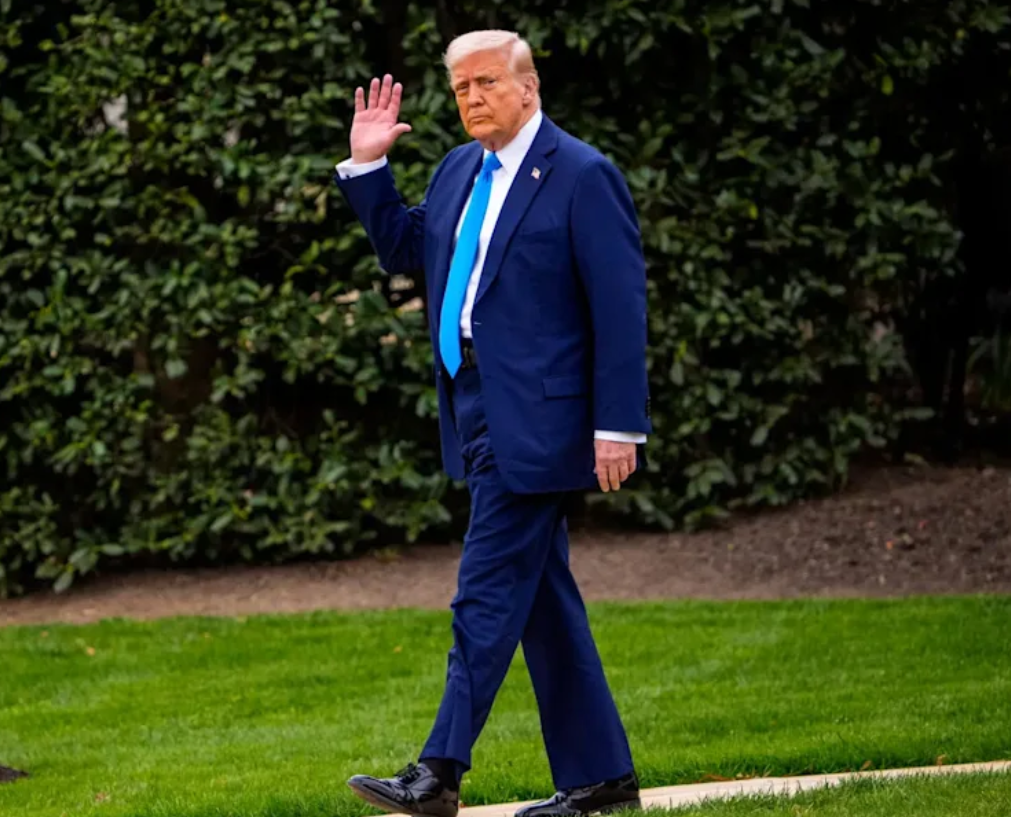- U.S. GDP shrank 0.3% in Q1 2025 as businesses rushed to import goods ahead of Trump’s tariffs.
- Consumer demand stayed strong, but government spending and job growth both declined sharply.
- Economists warn of a possible recession and say the Fed may pause rate cuts due to tariff-driven inflation.
The U.S. economy hit the brakes hard in the first quarter of 2025 — shrinking for the first time in three years — as companies rushed to stock up on goods before President Trump’s sweeping new tariffs kicked in.
According to a fresh report from the Commerce Department, GDP fell 0.3% between January and March, a sharp reversal from the 2.4% growth seen at the end of 2024. It’s the worst quarterly performance since early 2022, when the country was still climbing out of the COVID crash.
Economists had expected at least 0.8% growth, so the number caught many off guard.
Tariff Fear Drove the Slowdown — and Might Hit Harder Later
Although Trump’s blanket tariffs weren’t formally rolled out until April 2, businesses moved fast to beat the clock. That surge in early-year imports made the GDP number look worse than it probably was. Imports are subtracted from GDP calculations, which is part of why things looked so bleak on paper.
Still, economists aren’t brushing this off. Many say that the early stockpiling of goods could lead to a steep drop in demand in the second quarter.
“This artificial front-loading of demand sets the stage for a sharper demand cliff in Q2,” said EY’s Gregory Daco. “That’s the phase to really worry about.”
Consumers Hanging In, But Government Spending Tumbles
Despite the weak top-line number, consumer and business spending held up surprisingly well. A more focused metric — final sales to private domestic purchasers — actually rose 3%, signaling that underlying demand didn’t collapse.
But the report also flagged a 5.1% drop in government spending, another factor dragging on growth. Much of that was tied to drastic cost-cutting from Trump’s Department of Government Efficiency (DOGE), led by none other than Elon Musk. Agencies were shut down, hundreds of thousands of federal jobs cut, and funding pulled from key research and health programs.
Job Growth Slows, Recession Warnings Get Louder
The labor market, once a bright spot, is now showing signs of wobble. ADP data for April came in weak, with only 62,000 jobs added — less than half the expected number. And Friday’s official jobs report is expected to show hiring has slowed dramatically from March.
With GDP down, job creation lagging, and tariff-related costs creeping higher, some experts now believe the U.S. may already be on the edge of a recession.
David Russell from TradeStation summed it up: “The numbers are stacking up. This could be the start.”
Fed Likely to Stay Put as Inflation Risks Rise
All this economic shakiness means the Federal Reserve is probably holding off on rate cuts for now. While the downturn might normally push the Fed to ease up, the tariff-fueled inflation risk complicates things.
“This data gives the Fed time,” said Olu Sonola of Fitch Ratings. “They’ll keep watching to see how inflation reacts before making a move.”
Slower Growth Expected for the Year Ahead
Looking forward, GDP growth for 2025 is now forecast at just 1.9%, down from 2.8% in 2024. And economists say rising prices from import tariffs — which are paid by U.S. companies and likely passed on to shoppers — could put even more pressure on household spending.

“We expect a real income shock when those price hikes hit consumers,” warned Paul Ashworth of Capital Economics.
So far, spending has stayed solid. But with inflation, layoffs, and fewer imports on the horizon, the real test for the economy may come over the next few months.

















